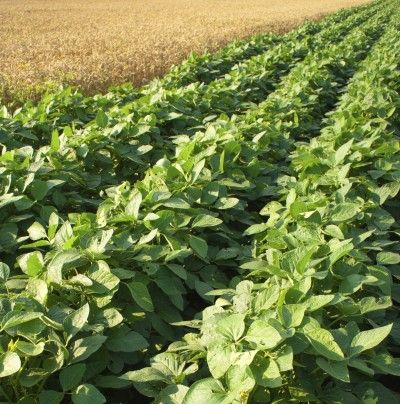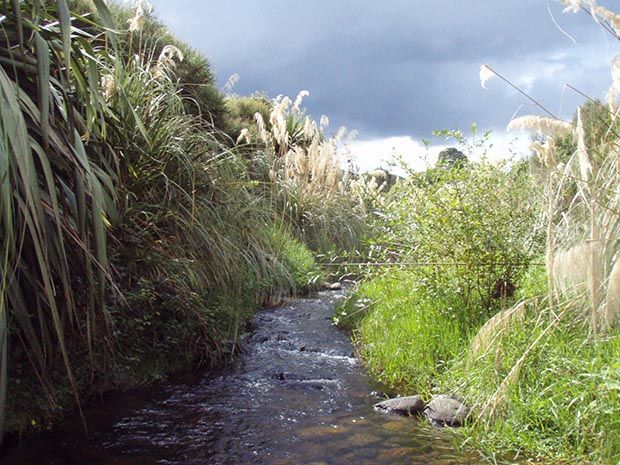
Regenerative Agriculture: A ladder to a better future | BLOG SHURUWAATAGRI
- Ayushi Shrivastav
- Feb 24, 2022
- 4 min read
Context:
What is Regenerative Agriculture?
Regenerative agriculture is a practice that helps to nourish people and the earth at the same time. By regenerative agriculture, we can restore soil and ecosystem health, address inequity and protect our land , waters and climate in a better position for future generations. In regenerative agriculture, we opt for an indigenous approach. Regenerative agriculture makes us think about our food sources, where grows when grows, how grows, who grows.
Why Regenerative Agriculture?
Ecological benefits:
To reduce soil erosion, reduce water pollution, improve water holding capacity in the soil, improve soil health and fertility and promote biodiversity on land, in the water and the air.
Personal and regional economic benefits:
By reducing the use of synthetic inputs such as chemicals fertilizers, herbicides and pesticides, we can save wealth. Regenerative agriculture provides financial security from diversified revenue streams. It promotes rural economic development by providing employment and healthier food choices.
Community benefits:
It develops a network of growers, who exchange information and learn from others. On-farm visits help growers to build stronger relationships with consumers.
Mental and physical health benefits:
Regenerative farmers and ranchers are joyful by adopting regenerative agriculture. The use of harmful chemicals impacts the health of farmers, labourers, and downstream communities. Principles of Regenerative Agriculture
Nurture relationships within and across the ecosystems:
Regenerative growers work towards the protection and setting up relationships between humans, lands, water bodies, livestock, wildlife, microbial life of the soil, and the environment. When we keep up animals and crops at the same time, crops residues provide food for livestock and organic waste left behind by animal manure, increases soil health and rise food quality and yield as well. So, by adopting regenerative agriculture, we can draw a link between these aspects.
Prioritize soil health :
Regenerative growers prefer no-till farming( farming without minimum soil disturbance). Regenerative growers feed and preserve biological aspects such as bacteria, fungi and other soil microbes under the ground that nourishes soil health above ground in return. To protect soil health, many other ways are there such as cover cropping, agroforestry, aquaculture, composting etc.
Reduce reliance on synthetic inputs:
Regenerative growers and ranchers trying to rely on synthetic inputs at a minimum. However, to prioritize soil health, regenerative growers show interest in beneficial insects, wildlife returns, diverse crops, livestock rotations and more. The use of less toxic and synthetic chemicals reduces risks to human health and increases financial independence by avoiding costly synthetic inputs. It increases water retention in soil, less harm to the environment and provides chemical-free organic food.
Nurture communities and reimagine economies :
Regenerative growers adopted regenerative agriculture to grow healthy food for their families and communities. Regenerative agriculture is a way of living with pride. You not only grow for yourself but you think for the whole community and their health and that's why it is said: " regenerative agriculture is a ladder to a better future"
Regenerative Agriculture techniques
There are many ways to adopt regenerative agriculture. However, only some practices are used by regenerative growers.
Cover cropping:
Cover crops are grown during harvesting or in the rows between permanent crops. Cover crops help to reduce soil erosion, improve soil health, increase biodiversity, increase water retention, and better.
Some cover crops are ryegrass, sorghum, barley, millet, cowpea, oats, triticale, alfalfa, fava, clover, red and white clover, lablab etc.
No-till farming:
No-till farming is a technique to grow crops without disturbing the soil during tillage. No-till farming especially reduces soil erosion. No-till farming requires special equipment like disc seeders or agriculture drills, it digs the soil exactly where the seed is supposed to drop without much soil disturbance.
Composting:
It is a way to turn organic waste such as manure and household food waste into fertilizer naturally. By using compost, we can manage soil health and can remain their fertility, and increase food quality.
Agroforestry:
It is an indigenous practice in which trees and shrubs are used to grow among crops or pasture land. It is a combination of agriculture and forestry which enhances farmers' livelihoods, increases biodiversity, improves soil health and structure, reduced soil erosion, etc.
Conservation buffers like hedgerows and riparian buffers
Areas that are populated with various plants support managing the environmental issues. Hedgerows are the boundaries of trees and shrubs around farmland that act as windbreaks and habitats for beneficial organisms. The vegetated growth near water streams is called riparian buffers and helps to reduce flooding risks, increase water quality and become a habitat for organisms.
What you can do to support Regenerative Agriculture
You must join regenerative agriculture for a better world whether you are a farmer or a consumer.
Be a voice for soil: proper management of soil and regular health care of soil is necessary. Spread awareness among neighbors and local farmers. Support organizations that work to build better soil. Soil is a basic unit of agriculture, the agriculture starts from the soil itself. Therefore, for a better future, better soil is needed.
Direct contact to local farmers: Ask local farmers about their soil practices, how they grow food, what they grow, and try to shorten the agricultural supply chain. You can directly approach local farmers and build a community that can support agricultural farms.
Compost at home: Make compost from household food waste at your home to reduce waste and recycle the waste to support regenerative agriculture.
Be a regenerative agriculture consumer: Know your food sources and obtain meat, dairy products to support regenerative agriculture as these products are grown to help regenerate the land. And consume only those food that source ingredients from regenerative farmers.
Grow your food: Try to grow your regenerative garden and follow regenerative agriculture techniques to grow your food. No matter what size of the area you have, you can start from a small area of the house or at the terrace. By growing your food, you can support regenerative agriculture.
























Comments